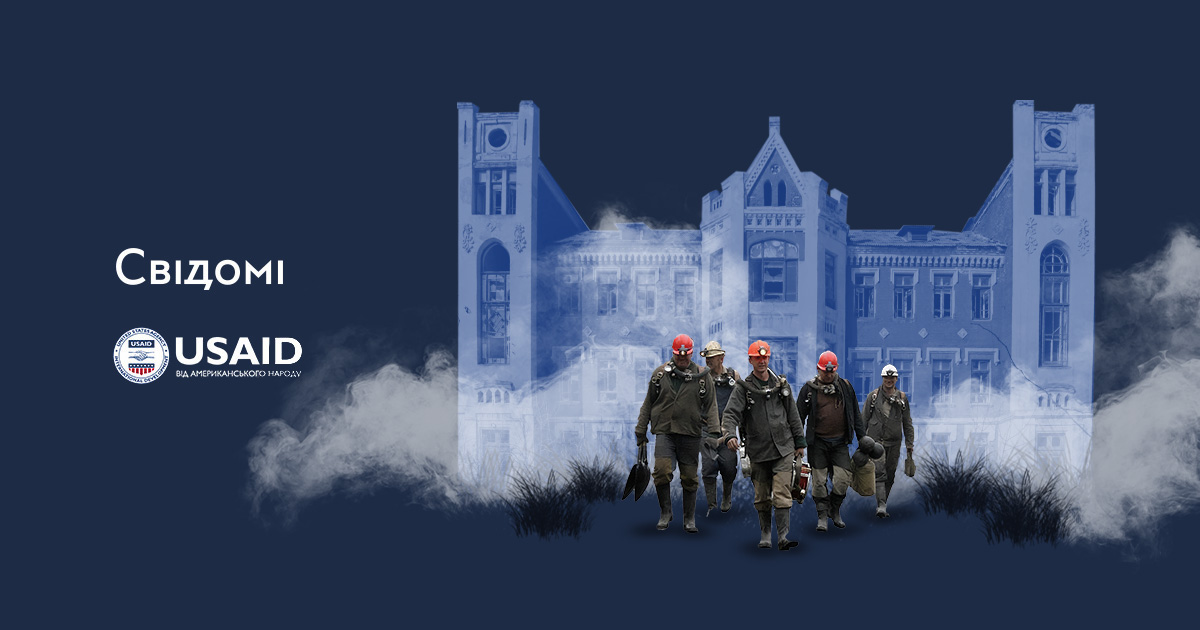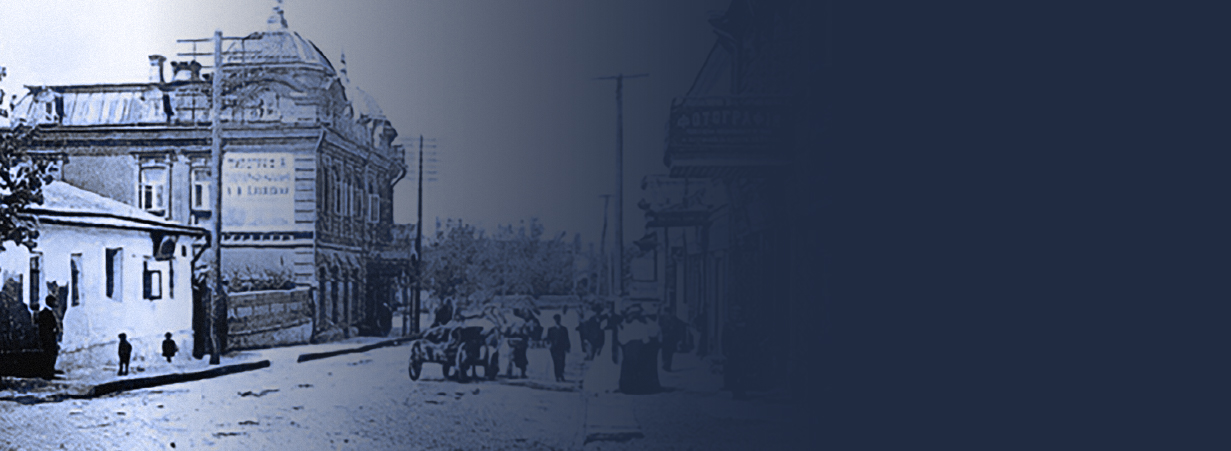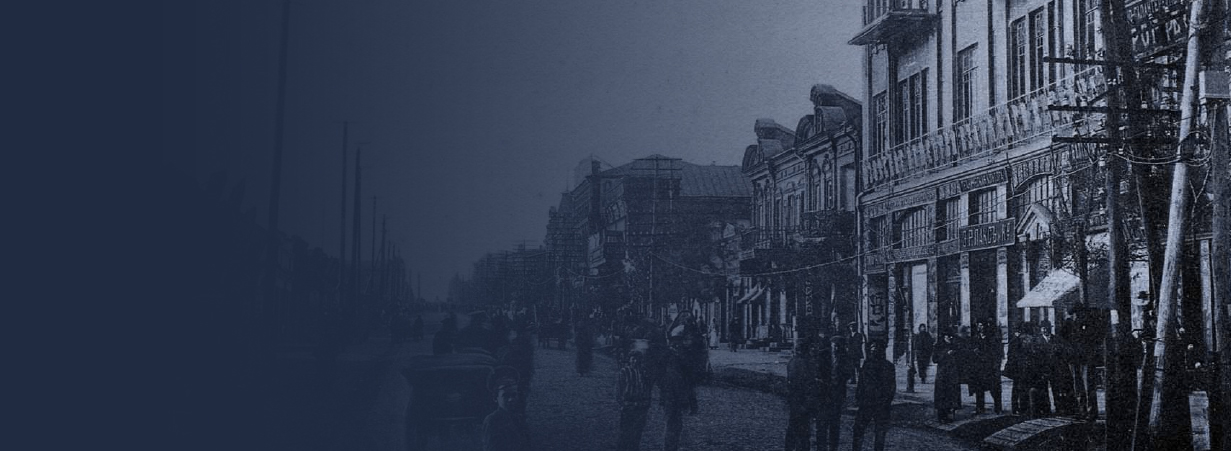The European heritage of Donbas: history, architecture and inhabitants

Rude. Uneducated. Pro-Russian-minded. Not interested in Ukrainian culture. The main value is to eat and drink. Half of them have been to prison. Perhaps they are Kremlin agents. Such stereotypes are spread about the residents of the Donetsk and Luhansk regions.
Stereotypes are exaggerated ideas about a group justifying the attitude towards it, said the classic psychologist Gordon Allport. They have different origins that are difficult to track because they can persist for a long time without change. Stereotypes arise to simplify the regional differences of Ukraine with its 40 million population. However, they always reflect the social and political conflicts that exist in society.
In 2014, such conflicts increased in Ukraine. Russia used propaganda to radicalise residents of the Donetsk and Luhansk regions. Some people were convinced, and some were even forced to take up arms and join illegal armed groups. At the same time, Ukrainians from other regions were also influenced by Russian disinformation. They believed that there was the majority of pro-Russian people in the east.
The study of attitudes towards internally displaced persons in 2014-2015 showed widespread negative stereotypes in all regions of Ukraine. For example, half of the residents of Lviv and Ivano-Frankivsk regions believed that the population of Donetsk and Luhansk regions were "marginalised, that is, people who have broken away from their roots". At the same time, most residents of the western regions have never visited the eastern regions.
And it is a pity. After all, eastern Ukraine has a fascinating European past, which the Soviet Union destroyed.

The Soviet myth of Donbas
Communists created their label for the region - "Donbas as a space of labour glory", where socio-economic class replaces nationality. The basis of this label is oblivion, an exclusive focus on the present, "labour achievements". According to Doctor of Historical Sciences Larysa Yakubova, during the Stalinization of the region, the communists managed to "actually erase the historical memory of the people in all its ethnic forms". In Soviet films about the Donetsk and Luhansk regions, everyone wears miners' uniforms instead of the usual national costumes of the time. Instead of the steppe landscape, you can see spoil heaps and chimneys. They served to create the image of "mining Donbas", which conflicted with reality. "Donbas is not only mono-profile mining towns with chemical enterprises," Yakubova explains in a comment to Svidomi.
The Soviet government stimulated migration to the region from all over the country. With many nations coexisting, Russian was the lingua franca, i.e. the language of interethnic communication. Therefore, people felt loyalty not to their country of origin but to the Soviet state.
The destruction of the rural population also contributed to the disappearance of multi-ethnicity. During Soviet rule, the share of the rural population changed, mainly due to the Holodomor. As a result, the people of the Donetsk and Luhansk regions were approaching the communist ideal of a classless society. But not as a result of the disappearance of material inequality, but because of the extremely high proportion of proletarians. Yakubova says:
A new urban space has emerged in which there is nothing but metal, concrete, and asphalt. It destroys individuality,
However, eastern Ukraine has another, pre-Soviet history.

The first Germans of the east
In the 18th century, the Russian Empire, of which the left bank of Ukraine was then a part, began to acquire the features of a modern state, developing a professional army, officer corps and bureaucratic apparatus. St. Petersburg managed to destroy the Hetmanate Crimean throne thanks to this. Catherine II sought to settle these lands with loyal military agrarians. To do this, she began the colonisation of eastern Ukraine, inviting Germans and Orthodox Christian subjects of the Ottoman Empire. Thus, foreign colonies appeared in the Donetsk and Luhansk regions. For them, the east was a land of opportunities where they could start life anew. Similar processes took place in the Austrian Empire: the Germans created colonies in Croatia, Hungary, Galicia and Bukovyna.
The first industrialists of the east
In the first half of the 19th century, the industry of Ukraine had already created more than 10% of the gross domestic product of the Russian Empire. At the same time, these enterprises were mainly light: 80% of sugar from beets and a third of the empire's alcohol were produced in Ukraine. It happened despite the significant duties imposed by St. Petersburg on Ukraine. According to William Blackwell, professor of history at New York University, this colonial policy was even more systematic than the empire's policy in Central Asia (Russia captured the region in the second half of the 19th century, sought to Russify it to prove to European countries that it also had its colonies).
The situation changed after 1856 when Russia was defeated in the Crimean War. As a result, St. Petersburg had to significantly alter the population's social structure to reform the Russian economy. Until 1861, half of the workers in the entire industry of the empire were serfs. Mostly, they worked in small manufactories or factories of their masters, and their work was inefficient. Due to the inability to develop industry independently, Petersburg introduced a monetary policy that encouraged foreign investment. Thanks to this, foreign entrepreneurs joined their compatriots living in the colonies of the Donetsk and Luhansk regions.
Hughes and the life of Yuzivka
Among them was John Hughes, a Welsh engineer who ran the Millwall Engineering Company. He received an order from the Russian Empire to manufacture armour for the Russian navy. John Hughes got an offer to head several existing metallurgical plants, but Hughes refused. Instead, having examined the already known coal deposits of the Donetsk region, he decided to build a new plant there.
He brought along equipment, knowledge and Welsh workers. Thus, in 1869, the working village of Yuzivka - modern Donetsk - was founded. Life in this town was difficult, like in many other mining settlements. Slaughter miners extracted coal manually, and sledge miners harnessed themselves to a sledge with coal and pulled it on all fours to the base of the mine well. Under such working conditions, almost every third of 1000 miners died. Researcher of the region Hiroaki Kuromiya believes that such a mortality rate corresponds to the German one - there, the rate was about two deaths per 1000 workers.
After work, miners returned to barracks or dugouts, where unsanitary conditions prevailed due to lack of water. Drinking alcohol and fighting were the most popular forms of recreation. There was a constant shortage of workers in the mines. In 1884, local foreign entrepreneurs established a disability insurance fund for workers to mitigate the problem. It was in line with the European trend of protecting workers' rights: in 1897, the British Parliament decided that the employer must pay compensation to an injured worker. In Germany, a similar rule has been in force since 1884.
At the same time, the Donetsk and Luhansk regions should not be equated with other European industrial areas, Yakubova believes. For example, while in Poland or Germany, industrialisation came naturally, in the Russian Empire and the USSR, industrialisation of eastern Ukraine was artificial and partial.
"Production is a complex system connected with many other spheres of life, cultural and social in particular," the scientist says. Instead, Russian and Soviet politicians wanted to catch up with other countries in one leap by rapidly building a military-industrial complex.

"De-Europeanisation" of the Donetsk and Luhansk regions
At the beginning of the 20th century, 80 thousand Germans, 50 thousand Greeks, 15 thousand Poles, 5 thousand Turks, about a thousand French and half a thousand British lived in the Ekaterinoslav province. This province stretched from Kryvyi Rih to Luhansk, from Dnipro to Mariupol.
The classic Leninist policy was to support national communities. Its implementation during the twenties went down in history as "indigenisation". However, under Stalinism, there was no place for diversity. Since the 30s, the Greeks of the Donetsk region have been victims of repression, and after the end of World War II, there was no memory of them. Mariupol was renamed to Zhdanov, Sartana - to Prymorske. Despite this, Greek communities have survived in the Donetsk region. Some of them were captured by militants of the illegal armed group of the "Donetsk People’s Republic" in 2014. They were forcibly mobilised on the eve of the full-scale invasion, said former Ombudsman Liudmyla Denisova.
At the beginning of World War II, Soviet security forces deported about 100 thousand Germans from the Donetsk and Luhansk regions. So, New York, Rothfeld and Otilienfeld disappeared from the map of the east. Instead, they were replaced by Novhorodske, Krasna Polyana and Kuravlevka. According to the reference book "German settlements in the USSR before 1941", there are about 350 such cities, villages and hamlets in Donetsk and Luhansk regions.
They also wiped out the memory of the heavy industry of the Donetsk and Luhansk regions. Soviet propagandists could not admit that the core region for them emerged, not least thanks to foreign capitalists.
The memory of the past
In 2021, Novhorodske returned to its previous name - New York. Should other ethnic toponyms be returned? Yakubova believes there is nothing wrong with this, but it is up to local communities. Such renaming can be a form of memory.
However, we cannot revive the past. The doctor of historical sciences says:
You can even call it Velyka Zhabokriakivka (Big Frogcroaking); it will not bring back the old New York; it is gone, and now other people live there. Greek villages or Jewish colonies have physically disappeared. People who live in their place must independently show their civic position and choose the past and the future


